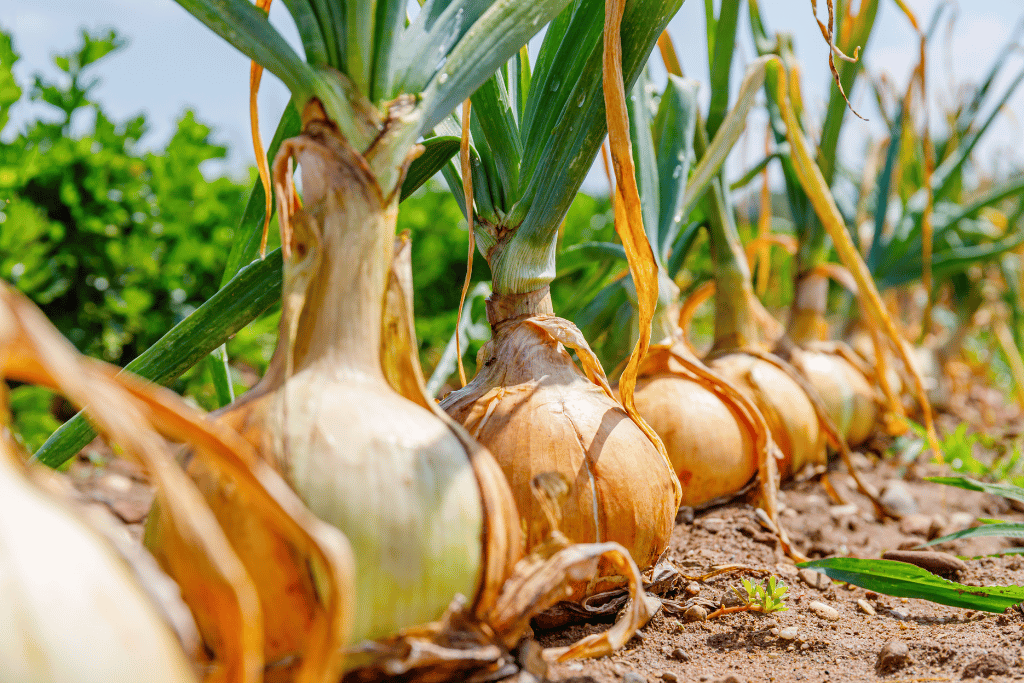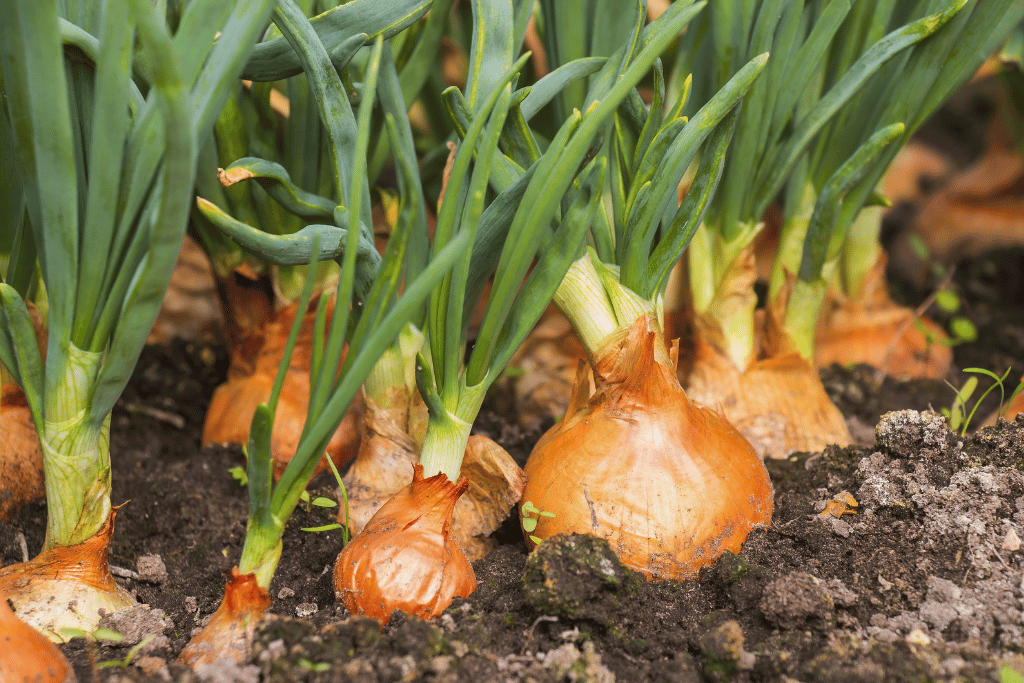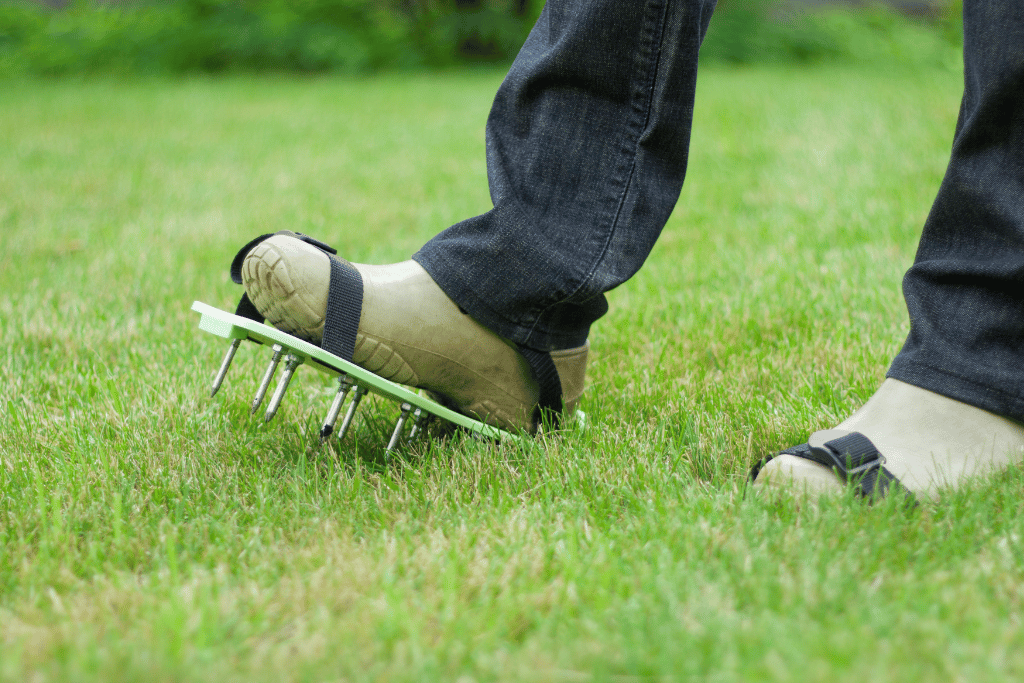
Ever thought about how onions reproduce? Do they rely on apps like we do or is it a more traditional method to finding their soulmate? Let me give you the inside look into the tear-inducing, flavorful world of onion reproduction.
Before we take this further, let’s eradicate a common misunderstanding – Onions don’t magically sprout baby onions (like humans do). It may be disheartening to hear, but those tiny green stems popping out of your onion aren’t indicators of fertility; they’re just proof that your onion is getting older.
So, how do onions reproduce? It’s simple, really: onions rely on their pleasant aroma to pull in pollinators. Who could blame them? Have you ever taken a whiff of an onion found outdoors? The scent is heavenly with just the slightest hint of sulfur.
Let’s not forget about the essential actors in successful onion fertilization: bees and other pollinators. The powerful scent of onions is too tempting for these insects to resist, who then help facilitate pollination from one flower to another – a crucial step towards seed formation and growth.
So, that’s the deal with onion reproduction! They aren’t using Tinder to find their perfect match, but they sure have a captivating way of procreating.
The Spice of Onion Life: How do Onions Reproduce Sexually?

When it comes to onion propagation, there are two main methods: sexual and asexual. Let’s spice things up and start with the juicy details – how do onions reproduce sexually?
To start, it’s essential to understand the structure of an onion. Both male and female reproductive organs are present in their flowers; male structures produce pollen while female organs contain ovules.
Onions provide a unique example of self-compatibility, as one onion alone can produce viable offspring with just its own pollen to fertilize the ovules. And there you have it – an onion seed!
Asexual propagation offers an easier, more effective route than sexual propagation, and it doesn’t require flowers. This process involves collecting pieces from the bulb or root of a plant to create optimal conditions for growing a new one with identical genetic traits as its parent onion.
It’s simpler and faster than other methods available today while also being reliable in terms of producing offspring with similar qualities.
In conclusion, onions are deceptively flexible when it comes to multiplication – no matter which approach you choose, sexual or asexual propagation, you can expect a good amount of scrumptious onions!
Asexual Reproduction: How do Onions Reproduce Asexually?

While most onions reproduce through sexual means, there is another way for them to propagate – asexual reproduction. This process involves the generation of bulbils or bulbets, which are small onion-like structures that can develop into mature plants.
Asexual reproduction allows onions to spread and thrive in their environment without the need for cross pollination or fertilization from other plants.
Bulbils, which look like miniature bulbs on the onion plant, provide a wonderful way to propagate new onions – all stored within these little structures is enough energy for them to take root!
Onion bulbs are able to reproduce in a unique way; when the small bulbils drop and land on the ground, they can sprout into new plants. This method of propagation is especially beneficial for onions cultivated in climates with short growing seasons or cold temperatures since it doesn’t depend on sexual reproduction.
How do Spring Onions Reproduce?

Have you ever pondered on the source of spring onions’ rich, subtle flavor? Not only are they deliciously mild compared to other onion varieties – but did you know how these slender beauties reproduce themselves as well?
There’s no need to ponder the answer any longer! Spring onions, also known as scallions, have remarkable versatility due to their ability to reproduce both sexually and asexually. How incredible is that?!
During the mating process, spring onions form flowers just like other onion varieties. Containing both male and female reproductive organs in each flower, pollination leads to seed production that can be used to cultivate new plants.
Let’s face it, how much time do we have to wait for flowers and seeds to sprout? That’s where asexual reproduction comes in handy. Spring onions can also generate bulbils; these are miniaturized versions of bulbs that form instead of flower blooms containing all the necessary genetic data required for new onion plants without having to wait around.
The next time you take a bite of those scrumptious spring onions, remember – they’re amazing not only in flavor but also with their reproducing ability.
How do Red Scarlet Bunching Onions Reproduce?

Red Scarlet Bunching Onions reproduce using seed production, producing white flowers atop tall stems from the center of the plant. As these flowers mature, they give rise to pods filled with dozens of small black seeds.
When the seed pods have matured and dried, it’s time for harvesting! By removing them from their plants, you can then place them in an airy area to complete the drying process. After a few days, the pods will be ready for dissembling – just separate those seeds and store them somewhere cool until planting season comes round again!
The Red Scarlet Bunching Onions can be multiplied through division, a process that requires unearthing the onion clump and dividing it into individual plants with their own root systems. After they are replanted in another area, these onions will generate new bulbs for harvest.
How do Onions Reproduce With Bulbils and Bulbets?
Onions are able to propagate through non-sexual bulbs, such as bulbils and bulbets, which appear on the onion plant. These methods of asexual reproduction negate the need for pollination or seed formation.
When environmental stressors such as extreme heat or drought arise, onion plants react by creating bulbils – miniscule bulbs that sprout from the stem of the plant in place of a flower. As these tiny bulbs mature and loosen their grip on the stalk, they fall to the ground and take root once planted in soil. Subsequently, fully-developed onions will grow from them.
Alternatively, Bulbets are minute bulbs that form at the foundation of an onion plant near its root system. It’s a natural occurrence in their development process; as the onion grows and matures, it produces clusters of smaller bulbets close to the main one. These can later be cultivated into new plants when detached from the larger bulb and planted into soil.
To propagate onions through bulbils, you should wait until the stalks start to dry and the bulbs begin to drop off. Then, just as with regular onion bulbs, plant them in moist soil ensuring that the pointed end is facing upward and placed where it can get full sunlight.
Furthermore, to propagate onions using bulbets, one must first dig up the onion plant from the soil and separate its main bulb from any smaller bulbs. Then, they should be planted in a sunny location with their pointed end facing upwards. And, in no time, you can enjoy your very own homegrown onions!
Bulbils and bulbets are both viable ways of propagating onions, resulting in genetically identical offspring. The most suitable propagation method will vary based on the onion variety and purpose.
Does Onion Reproduce by Roots?

While onions can propagate through their roots, it is not the primary way in which they reproduce.
Onions are often propagated with seeds, sets (small bulbs), or bulbils/bulbets (tiny bulbs that emerge in the flower head or leaf axils). When a seed is planted to grow an onion plant, its roots will help keep it secure and nourished by providing stability and absorbing water and nutrients.
Onion plants, unlike ginger and turmeric, are unable to reproduce via their roots. They instead rely on bulbs or sets for propagation, forming bulbils or bulblets as a result.
Bonus: Onion plants have the remarkable ability to produce shoots from their roots when damaged or cut back, which can then grow into new onion plants – though this is not typically a preferred method of propagation.



